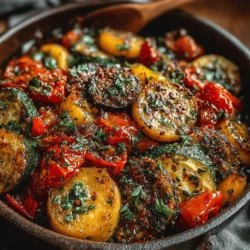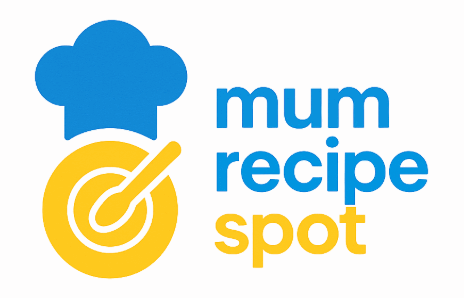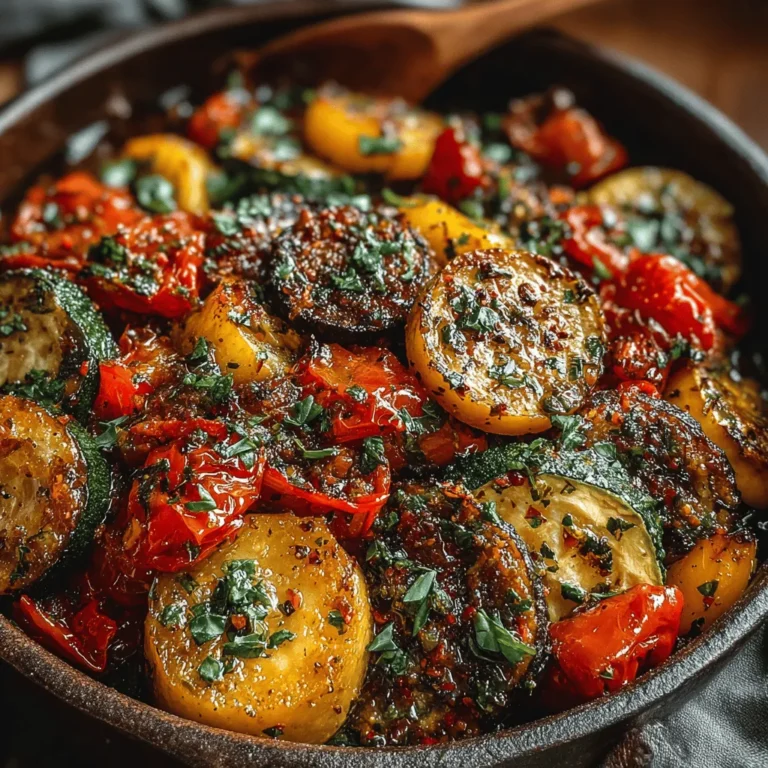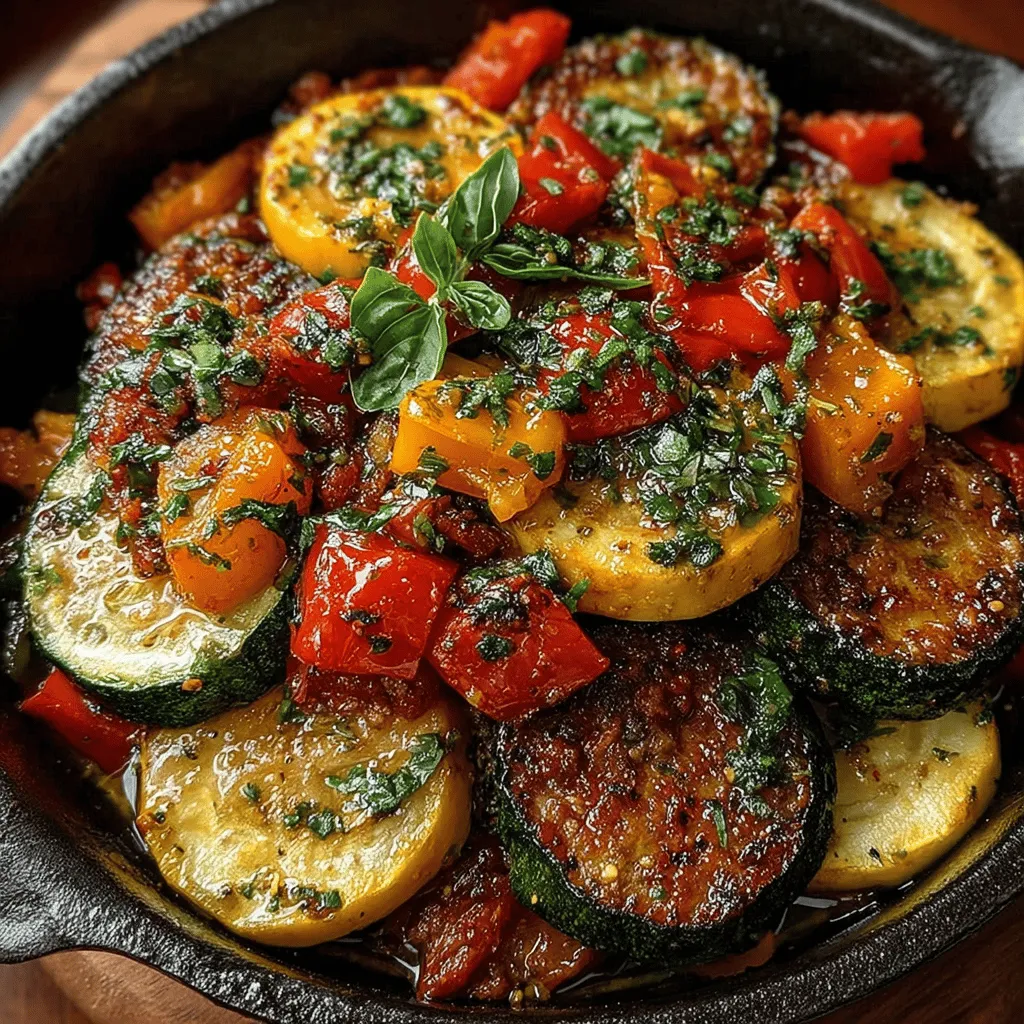Introduction
Ratatouille is more than just a dish; it’s a celebration of seasonal vegetables that transports you straight to the heart of Provence, France. This classic French recipe is a testament to the rich culinary culture that emphasizes fresh, local produce. At its core, ratatouille is a medley of vibrant vegetables, primarily featuring eggplant, zucchini, and bell peppers, all coming together to create a symphony of colors and flavors that can brighten any meal.
The beauty of ratatouille lies in its versatility. It can be served as a delightful side dish, a satisfying main course, or even prepared in larger batches for meal prep throughout the week. Whether you’re hosting a dinner party, looking for a comforting family meal, or simply wanting to enjoy a healthy dish, this recipe fits the bill perfectly. With a variety of seasonal vegetables packed into one dish, ratatouille not only delights the palate but also offers a plethora of health benefits, making it an excellent addition to any diet.
Understanding Ratatouille
Ratatouille’s roots can be traced back to the rustic cooking traditions of Provence, where fresh vegetables are celebrated and showcased in simple yet effective ways. This dish is known for its rich heritage, often prepared in the summer months when the ingredients are at their peak. The traditional ratatouille consists of a combination of vegetables, including eggplant, zucchini, bell peppers, tomatoes, onions, and herbs, all of which are simmered together to create a hearty, wholesome dish.
As ratatouille has gained popularity, various cultures have adopted and adapted it, resulting in numerous regional variations. For instance, some recipes may include additional ingredients such as squash or carrots, while others may focus on specific cooking techniques like grilling or roasting the vegetables before combining them. Regardless of the variations, the essence of ratatouille remains the same: a celebration of seasonal vegetables, highlighting their flavors and textures.
Seasonal vegetables are fundamental to ratatouille, not only for their freshness but also for their nutritional value. Incorporating a variety of vegetables into your diet can lead to improved health outcomes, as they are rich in vitamins, minerals, and antioxidants. The vibrant colors of the vegetables in ratatouille are indicative of their unique health benefits, making this dish as nutritious as it is delicious.
Key Ingredients in Vibrant Eggplant Zucchini Ratatouille
The success of any ratatouille lies in its ingredients. For our vibrant eggplant zucchini ratatouille, we will focus on several key components that contribute to the dish’s overall flavor, texture, and nutritional benefits.
Eggplant
Eggplant, also known as aubergine, is a staple in ratatouille. Its spongy texture and mild flavor allow it to absorb the surrounding seasonings beautifully. Nutritionally, eggplant is low in calories and high in fiber, making it a great choice for those looking to maintain a healthy diet. It’s also rich in antioxidants, particularly nasunin, which has been shown to promote heart health and protect brain function.
Zucchini
Zucchini adds a lovely, tender texture to the dish and a mild flavor that complements the more robust ingredients. This summer squash is not only versatile but also packed with nutrients. Zucchini is an excellent source of vitamins A and C, as well as potassium and fiber, which can aid in digestion and support overall well-being.
Bell Peppers
Bell peppers bring a burst of sweetness and a slightly tangy flavor to the ratatouille. They come in various colors—red, yellow, and green—each offering a unique taste profile and nutritional benefits. Rich in vitamins A and C, bell peppers are also high in antioxidants, which can help combat inflammation and support immune function.
Onions and Garlic
The aromatic duo of onions and garlic is essential for building the foundation of flavor in ratatouille. Onions provide a sweet, savory base, while garlic adds depth and a hint of pungency. Both ingredients are known for their health benefits, including anti-inflammatory properties and potential to support heart health, making them indispensable in this recipe.
Tomatoes
Tomatoes serve as the base for the ratatouille, providing moisture and acidity that balance the richness of the other vegetables. They are also a significant source of vitamins C and K, as well as lycopene, a powerful antioxidant associated with various health benefits, including reduced risk of heart disease and certain cancers.
Herbs and Spices
To elevate the flavors of the ratatouille, we will incorporate a selection of herbs and spices, including oregano, thyme, and red pepper flakes. These aromatic additions not only enhance the dish’s taste but also offer various health benefits. Oregano and thyme are rich in antioxidants and have been linked to anti-inflammatory effects, while red pepper flakes can add a touch of warmth and spice, catering to diverse palates.
Step-by-Step Instructions for Preparing Ratatouille
Preparing a vibrant eggplant zucchini ratatouille is a straightforward process that allows you to appreciate the natural flavors of the vegetables. Here’s how to get started:
Preheating the Oven
Before diving into the preparation of your ingredients, it’s crucial to preheat your oven. A properly heated oven ensures that your ratatouille cooks evenly and allows the vegetables to caramelize beautifully, enhancing their flavors. Set your oven to 400°F (200°C) for optimal roasting.
Sautéing the Aromatics
Begin by preparing your aromatics. Chop the onions and mince the garlic, as these will form the flavor base of your ratatouille. Heat a generous drizzle of olive oil in a large skillet over medium heat. Once the oil is shimmering, add the chopped onions. Sauté them for about 5 minutes, stirring occasionally, until they become translucent and fragrant.
Next, add the minced garlic to the skillet, cooking for an additional minute until it becomes aromatic. Be careful not to let the garlic burn, as it can turn bitter. This step is vital, as the sautéed onions and garlic will infuse the entire dish with a warm, savory flavor that complements the other vegetables beautifully.
As you continue with the recipe, you will combine the remaining ingredients in a way that honors the traditional methods of ratatouille while allowing for personal touches and adaptations. The next steps will guide you in layering the flavors and textures that make this dish a standout choice.
Cooking the Vegetables
To achieve the perfect texture and flavor balance in your vibrant eggplant zucchini ratatouille, it’s essential to cook the vegetables properly. Start by heating a generous amount of olive oil in a large skillet over medium heat. The oil serves as a base to enhance the flavors of the vegetables while preventing sticking.
Begin with the eggplant, as it requires a bit more time to soften. Cut the eggplant into medium-sized cubes to ensure even cooking. Once the oil is hot, add the eggplant cubes and sauté for about 5-7 minutes until they begin to soften and develop a golden-brown color. The trick here is to avoid overcrowding the pan; if necessary, cook the eggplant in batches to ensure they brown nicely.
Next, add the onions and bell peppers. Sauté these vegetables for another 3-5 minutes until they are translucent and fragrant. The sweetness from the onions and bell peppers will complement the earthy flavor of the eggplant perfectly.
Following the onions and bell peppers, introduce the zucchini and squash. These vegetables cook quickly, so they need less time in the pan—about 3-4 minutes should suffice. Stir frequently to prevent sticking and promote even cooking. The goal is to achieve a tender-crisp texture, where the vegetables are cooked through but still retain some bite.
Adding Tomatoes and Spices
Once your vegetables are perfectly sautéed, it’s time to incorporate the juicy tomatoes and aromatic spices that elevate the dish. Add diced tomatoes, either fresh or canned, to the skillet, along with their juices. The tomatoes will create a vibrant sauce that binds all the flavors together.
Stir in minced garlic and your choice of spices. Commonly used spices for ratatouille include dried thyme, basil, and bay leaves, which add depth to the dish. If you enjoy a bit of heat, a pinch of red pepper flakes can bring a delightful kick. Season with salt and pepper to taste, ensuring that you balance the flavors as the dish simmers.
Allow the mixture to come to a gentle simmer. Cover the skillet and let it cook for about 20-30 minutes, stirring occasionally. This simmering process is crucial, as it allows the flavors to meld beautifully while the vegetables soften further. You want the sauce to thicken slightly, creating a luscious coating for the vegetables.
Baking the Ratatouille
Baking the ratatouille not only enhances its flavor profile but also contributes to a pleasing texture. Preheat your oven to 375°F (190°C). Transfer the vegetable mixture into a large baking dish, spreading it evenly.
For a classic presentation, consider arranging thinly sliced zucchini, eggplant, and bell peppers in a circular pattern on top of the ratatouille mixture. This technique not only looks stunning but also allows each vegetable to roast perfectly. Drizzle with a bit more olive oil and sprinkle with fresh herbs like thyme or parsley for added aroma.
Cover the baking dish with aluminum foil to trap moisture and promote even cooking. Bake in the preheated oven for about 30-40 minutes, removing the foil in the last 10 minutes to allow the top to caramelize. The goal is to achieve a beautiful golden-brown color while ensuring the vegetables are tender and infused with the rich flavors of the sauce.
Garnishing and Serving
Presentation is key when serving your vibrant eggplant zucchini ratatouille. Once it’s out of the oven, let it cool for a few minutes. This resting time allows the flavors to settle and enhances the overall taste. Serve the ratatouille warm, garnished with fresh basil or parsley for a pop of color and freshness.
When it comes to serving temperature, ratatouille can be enjoyed warm, at room temperature, or even chilled. This versatility makes it an excellent choice for various occasions, whether it’s a formal dinner party or a casual family meal.
Nutritional Benefits of Eggplant Zucchini Ratatouille
Eggplant zucchini ratatouille is not only a feast for the eyes but also a powerhouse of nutrition. Each ingredient brings its own set of health benefits:
– Eggplant: Rich in antioxidants, particularly nasunin, which protects brain health, and high in fiber, which aids digestion and helps maintain a healthy weight.
– Zucchini: Low in calories and high in nutrients, zucchini offers vitamins A and C, potassium, and antioxidants, making it great for skin health and hydration.
– Bell Peppers: Packed with vitamin C and various antioxidants, bell peppers contribute to immune support and reduce inflammation.
– Tomatoes: A key source of lycopene, tomatoes are great for heart health and may reduce the risk of certain cancers.
This dish is low in calories and nutrient-dense, making it an excellent addition to any diet. It fits seamlessly into vegetarian, vegan, and gluten-free lifestyles, providing a wholesome option for those looking to incorporate more plant-based meals into their routine.
Serving Suggestions and Pairings
The versatility of eggplant zucchini ratatouille allows it to shine in various serving contexts. Here are some delicious ideas for how to enjoy this dish:
– As a Side Dish: Serve ratatouille alongside grilled meats or fish. The freshness of the vegetables complements the richness of grilled proteins beautifully.
– Main Course: Pair it with grains like quinoa or rice for a satisfying and hearty meal. Ratatouille can be a filling vegetarian main dish, offering a balance of flavors and textures.
– Chilled Salad: For a refreshing summer option, serve ratatouille chilled as a salad. It pairs well with crusty bread or a light vinaigrette.
When it comes to wine pairings, consider a light-bodied red wine such as Pinot Noir or a crisp white wine like Sauvignon Blanc. Both options complement the dish’s flavors without overwhelming them, enhancing your dining experience.
Storage and Reheating Tips
To maximize the shelf life of your eggplant zucchini ratatouille, proper storage is essential. Allow the dish to cool completely before transferring it to an airtight container. When stored correctly in the refrigerator, it can last for up to 4-5 days.
For reheating, gentle methods work best to preserve the texture and flavor of the vegetables. You can reheat individual portions in the microwave or warm the entire dish on the stovetop over low heat, stirring occasionally until heated through. If you prefer, you can also reheat the ratatouille in the oven at 350°F (175°C) for about 15-20 minutes.
If you wish to store ratatouille for longer, it freezes well. Portion it into freezer-safe containers, leaving some space for expansion, and freeze for up to three months. To thaw, simply transfer it to the refrigerator overnight before reheating.
Conclusion
Vibrant eggplant zucchini ratatouille is a delicious, nutritious, and visually stunning dish that brings a taste of French cuisine into your home. Its colorful array of vegetables not only pleases the palate but also offers a bounty of health benefits, making it a perfect choice for various occasions.
Encouraging culinary creativity, this timeless recipe allows for plenty of variations—experiment with different vegetables, herbs, or spices to make it your own. Whether served warm, as a main dish or a side, or chilled as a refreshing salad, ratatouille is sure to delight. So, gather your ingredients, roll up your sleeves, and enjoy the process of creating this classic dish that never goes out of style.



